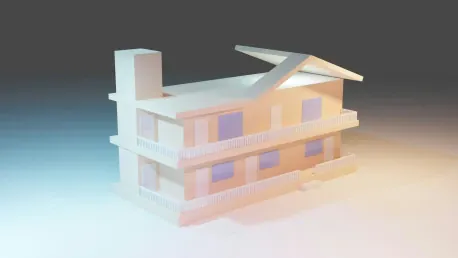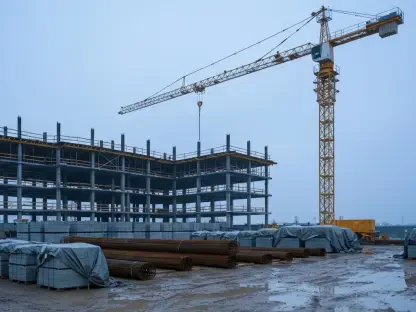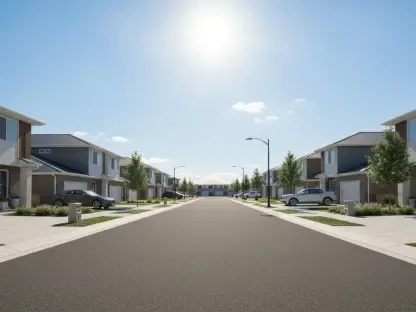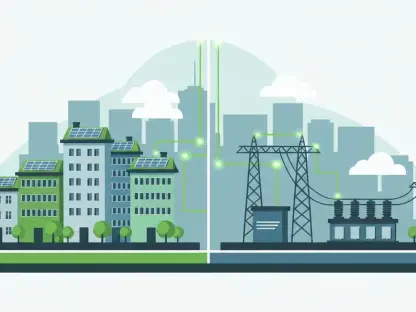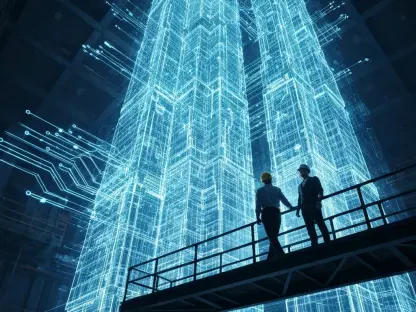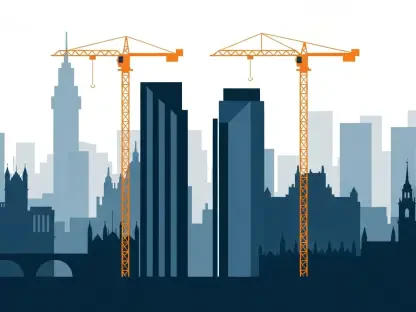The escalating costs of homeownership and the struggles faced by low-income families in securing affordable housing have become increasingly prominent issues in modern society. In light of these challenges, innovative solutions are being explored, one of which involves the use of 3D concrete printing technology. This emerging technology has the potential to revolutionize residential construction, offering a more economical and efficient way to build homes. Central to this innovation is the work of Linda Reisman and Zohar Klevan’s venture, 3D Concrete Printing Muskoka (3DCP Muskoka), which aims to address the pressing need for affordable housing through the utilization of advanced construction methods.
The Need for Affordable Housing
Linda Reisman’s journey toward addressing the affordable housing crisis began with her own experiences during the COVID pandemic when the rising costs of traditional construction methods became a formidable barrier to building her home. As an advocate for low-income families in Muskoka, she recognized that the challenge of affordability was widespread, affecting many who aspired to homeownership but were hindered by financial constraints. Reisman’s personal struggle and her commitment to finding a solution for those facing similar difficulties fueled her exploration into alternative methods of construction, ultimately leading to the inception of 3DCP Muskoka.
Understanding the profound impact that secure and affordable housing has on the well-being of individuals and families, Reisman envisioned a new approach to residential construction. Instead of relying on conventional building techniques, which often entail significant expenses and extended timelines, she sought to harness the power of technology to create homes that were not only budget-friendly but also swiftly constructed. The foundational goal of 3DCP Muskoka was to develop a model that could be replicated in various communities, providing access to quality housing for those most in need.
Innovative Construction Technology
At the heart of 3DCP Muskoka’s pioneering efforts is the use of a mobile robotic arm that prints houses, furniture, and other architectural elements using a specialized concrete mixture. This method of construction is both groundbreaking and practical, employing technology to streamline the building process while reducing overall costs. By automating many aspects of construction, including the precise application of concrete layers, the process minimizes waste and requires fewer workers, resulting in significant savings. Moreover, the speed at which structures can be completed is markedly increased, with the capability to form the walls of a 2,000-square-foot home in just 72 hours.
The technology employed by 3DCP Muskoka offers flexible design capabilities, allowing for various architectural forms that are not easily achievable through traditional construction methods. The robotic arm can adjust to intricate designs and complex topographies, such as rock surfaces, negating the need for expensive and environmentally disruptive practices like blasting. Additionally, the adaptability of the technology facilitates the incorporation of essential amenities, including electrical and plumbing systems, directly within the printed walls, ensuring that the final structures meet the complete functional requirements of modern homes.
Collaborative Approach with Developers
A key component of 3DCP Muskoka’s strategy is fostering collaborative partnerships with developers and builders. By combining the technological advancements of 3D concrete printing with the expertise and experience of traditional construction professionals, the company aims to enhance both efficiency and sustainability in building projects. This collaborative approach is essential not only for the technical success of each construction endeavor but also for generating broader acceptance and integration of the technology within the industry.
Through these partnerships, developers contribute their extensive knowledge of building design and project management, while 3DCP Muskoka supplies the necessary equipment and technical expertise to execute the construction. This symbiotic relationship leverages the strengths of both parties, ensuring that projects are completed to high standards and within shorter timeframes. The ultimate objective is to demonstrate that 3D concrete printing can be seamlessly integrated into the conventional construction workflow, offering a viable alternative that can address the current affordability crisis without compromising on quality or durability.
The collaboration also serves to build trust and confidence among stakeholders, including potential homeowners, investors, and regulatory bodies. As the technology is relatively new in Canada, showcasing successful projects through joint ventures with established builders can pave the way for wider acceptance and support. By proving the effectiveness and reliability of 3D concrete printing in real-world applications, 3DCP Muskoka aims to break down barriers to adoption and encourage more widespread use of these innovative methods.
Technical Details of 3D Printing
The process of 3D concrete printing involves a sophisticated blend of materials science and robotics. The specialized concrete mixture used in the printing process is carefully formulated to ensure that it is both structurally sound and capable of being pumped through the robotic arm. As the mixture is extruded, the robotic arm meticulously layers the concrete to form walls and other structural components, following a pre-programmed design pattern. This automated layering not only allows for precise construction but also ensures consistency in the quality of the built structures.
One of the significant advantages of 3D concrete printing is its adaptability to different construction needs and environments. The robotic arm can be programmed to accommodate various design specifications, making it possible to customize homes to suit individual preferences and local building requirements. The printer’s ability to operate on challenging terrains, such as rocky surfaces, eliminates the need for extensive site preparation, further reducing costs and environmental impact. Additionally, the integration of essential systems, such as electrical wiring and plumbing, is seamlessly incorporated during the construction process, ensuring that the finished homes are fully functional upon completion.
The mobility of the 3D printer is another critical feature that enhances its practicality for widespread use. Mounted on a travel trailer, the printer can be easily transported to different construction sites, allowing 3DCP Muskoka to undertake projects in various locations. This mobility is particularly advantageous for addressing housing shortages in remote or underserved areas, where traditional construction methods may be less feasible. By bringing the printer directly to the site, the company can efficiently build homes where they are needed most, without the logistical challenges often associated with transporting large construction materials and workforces.
Advocacy and Education Initiatives
To successfully integrate 3D concrete printing into the broader construction industry, significant efforts must be made to educate and advocate for its benefits. Linda Reisman has been actively engaged in outreach to legislators, industry professionals, and the general public to raise awareness about the potential of this innovative technology. Her advocacy efforts focus on demonstrating that while the method is novel, it builds upon the long-standing tradition of using concrete in construction, and hence, should be viewed as an evolution of existing practices.
Reisman’s educational initiatives are aimed at aligning this new technology with existing construction codes and regulations, ensuring that 3D printed homes meet all necessary safety and quality standards. This involves working closely with engineers, architects, and regulatory bodies to establish guidelines that facilitate the acceptance of 3D printing in mainstream construction. By addressing any concerns and highlighting the advantages of the technology, Reisman seeks to build a robust framework that supports the use of 3D concrete printing in various construction projects.
An important aspect of Reisman’s advocacy work is the focus on the environmental benefits of 3D concrete printing. The reduced material waste and minimized disruption to natural landscapes make this method a more sustainable option compared to traditional construction techniques. By emphasizing these environmental advantages, Reisman aims to garner support from stakeholders who prioritize sustainability and are looking for eco-friendly building solutions. Her efforts to showcase the technology through tangible models and demonstrations also play a vital role in convincing skeptics and garnering broader acceptance.
Future Goals and Sustainability Efforts
The rising costs of homeownership and the difficulties that low-income families face in finding affordable housing have become significant issues in today’s society. To tackle these challenges, innovative solutions are being pursued, such as the use of 3D concrete printing technology. This cutting-edge technology has the potential to transform residential construction by providing a more economical and efficient way to build homes. Central to this innovation is the venture of Linda Reisman and Zohar Klevan, known as 3D Concrete Printing Muskoka (3DCP Muskoka). Their initiative aims to address the urgent need for affordable housing through the use of advanced construction techniques. With 3D concrete printing, homes can be built faster, with less waste, and more cost-effectively, offering a promising solution to the housing crisis. As this technology continues to evolve, it holds the promise of making homeownership more accessible for many families who might otherwise be priced out of the market.
